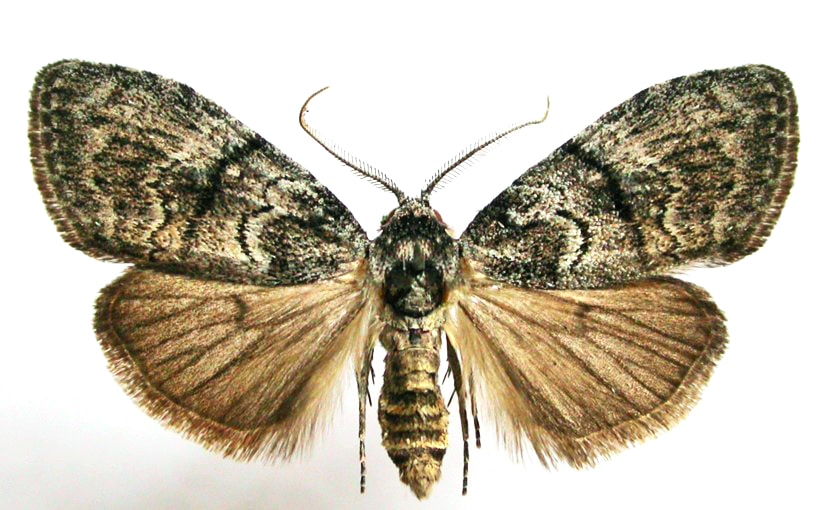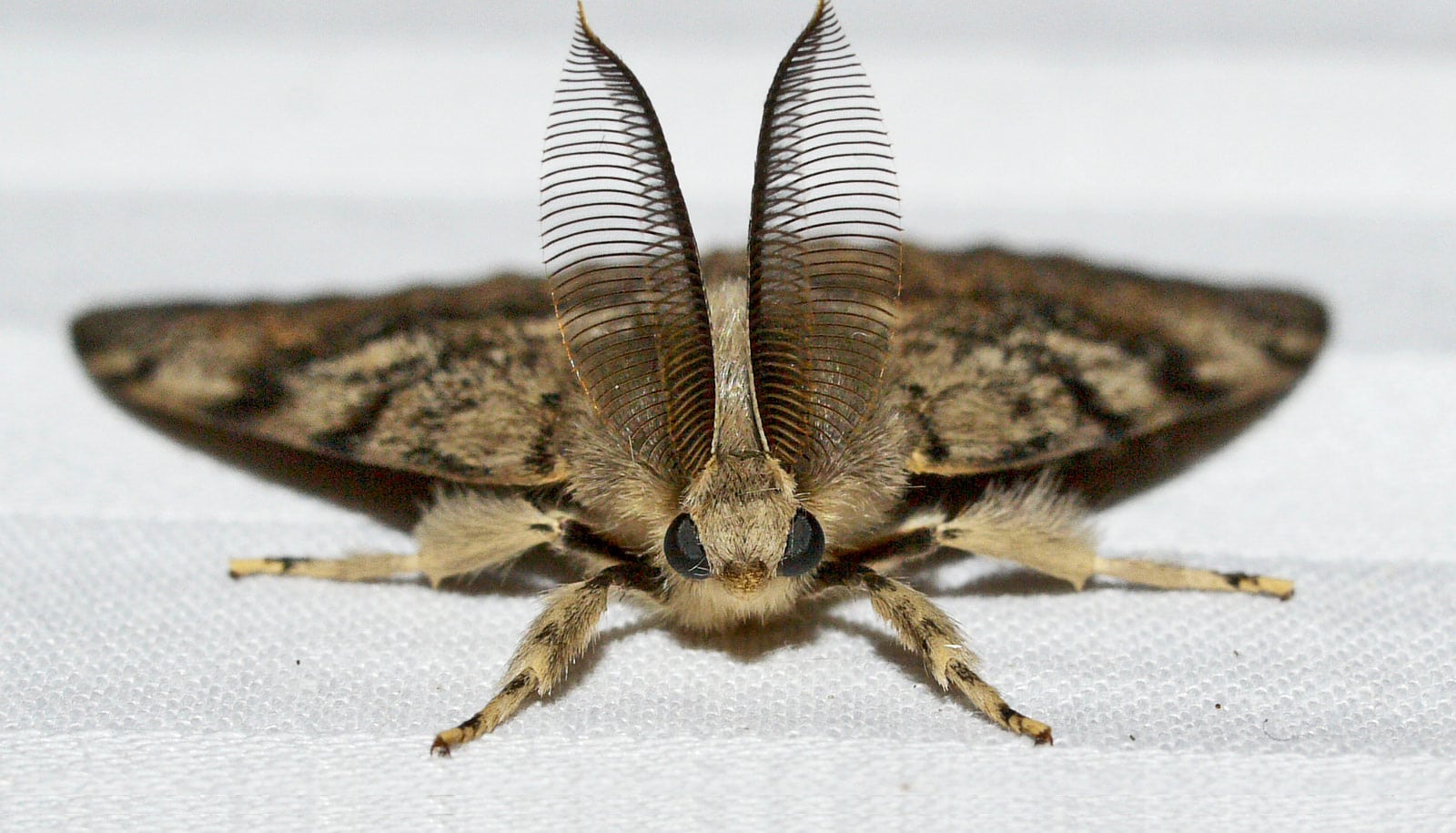Male moths with larger antennae are better equipped to detect the low quantities of sex pheromone, a chemical signal, that female moths release to attract mates, research shows.
The finding, published in Science of Nature, lends support to one of Charles Darwin’s lesser known ideas.
“…males that are good listeners apparently make attractive mates.”
In 1871, Darwin suggested that a female’s choice of mate could drive the evolution of mating signals in males. The male is effectively advertising his qualities and if a female chooses to mate with him, the genes for his traits are passed on to their offspring in the next generation, which ensures the evolution of the male display and the female’s preference.
The theory of sexual selection has dominated research into animal behavior for decades, and thousands of studies support Darwin’s theory of sexual selection, says evolutionary biologist Mark Elgar, professor in the University of Melbourne’s School of Biosciences.
“But Darwin also proposed that sexual selection can favor males who are better at detecting and responding to signals from females, including chemical signals like pheromones. So males with sensory structures that can better detect female signals may have the edge in finding them in order to mate and pass on their genes.”

Find a mate in 7 days
The team set up field experiments with the gum-leaf skeletoniser moth, Uraba lugens. The moths get their name from the damage they cause to eucalyptus trees.
The adults only live for around seven days and do not eat in this time, says PhD student Tamara Johnson. “Within this week, the moths must attract a mate, sometimes competing with many other moths in the same area,” she says.
Female U. lugens moths attract the attention of males by releasing sex-pheromones, with the chemical signal peaking at seven hours into the first phase of darkness in their adult life.
While adult females have a simple filiform or threadlike antennae, males have feathery, bipectinate antennae.
Following Darwin’s original suggestion, the team predicted that males with larger antennae, which have more chemical sensors, would better detect smaller amounts of sex pheromone.
Watch: Cuttlefish use eyes and arms to fight over mate
As part of her PhD project, Johnson placed traps at dusk with either one or two female moths. The number of males, and the size of their antennae, that were caught in the traps were recorded the next day.
The researchers found that male moths with larger antennae, independent of their body size, were more likely to detect the sex pheromone of a single female.
Subtle flirting?
“Our data are consistent with Darwin’s 1871 prediction that sexual selection favors exaggerated sensory receptor structures like antennae,” says Matthew Symonds of Deakin University.
“As evolutionary biologists, it’s very rewarding to be able to support a long-standing idea, originally floated by Darwin, that hasn’t attracted much attention,” he says.
The team also suggests that females adjust their signaling to maximize their encounters with particular kinds of males, rather than to simply maximize encounters with any males.
“Our data suggest that by releasing smaller amounts of pheromone, the female increases the likelihood of attracting males with longer antennae. These males may be better mates because producing and maintaining a large sensory structure is costly and possible for higher quality males only. Those male qualities may be passed onto her offspring,” says Elgar.
Some frogs mate on land to avoid a ‘breeding frenzy’
The team also found that if females are initially unsuccessful at attracting a male, then calling effort increases to attract more mates, but potentially poorer quality males with shorter antennae.
Males attracted to traps with two females, whose combined pheromone emission was presumably greater, had relatively smaller antennae.
Our results show that females may have a significant and largely unrecognized role in the sexual selection of elaborate antennae, Elgar says.
“For the gum-leaf skeletoniser moth, males that are good listeners apparently make attractive mates.”
Source: University of Melbourne



